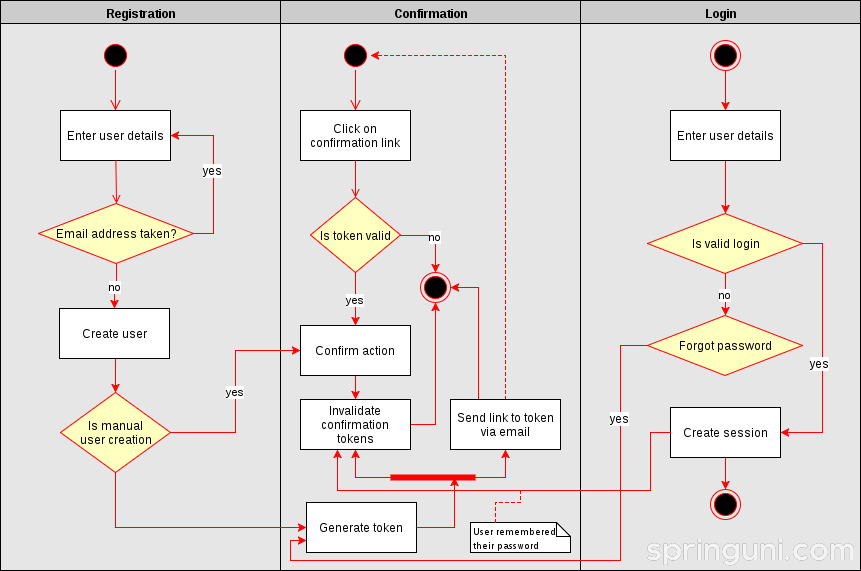User Management
This service is part of light-portal, and it is used for managing users for the light platform. Most functionalities of the light-portal need the user to be logged in.
Scope
User Management only manages user registrations, email confirmations, profile updates, user deletes and password changes. The user login and logout will be managed by the light-spa-4j and light-oauth2 on light-portal for single-page applications. When you scale to multiple router instances, the session management will be implemented with light-session-4j.
Workflow

Modules
All light-portal services are based on the light-kafka with Event Sourcing and CQRS. There are two modules that is involved for user management.
user-command
It is responsible for updates with the user profile and based on light-hybrid-4j for the API with light-kafka for the event store.
user-query
It is responsible for query user profiles with different material view projections generated from the user events. All the data is readily available in the Kafka Streams Key/Value store, so the latency is very low.